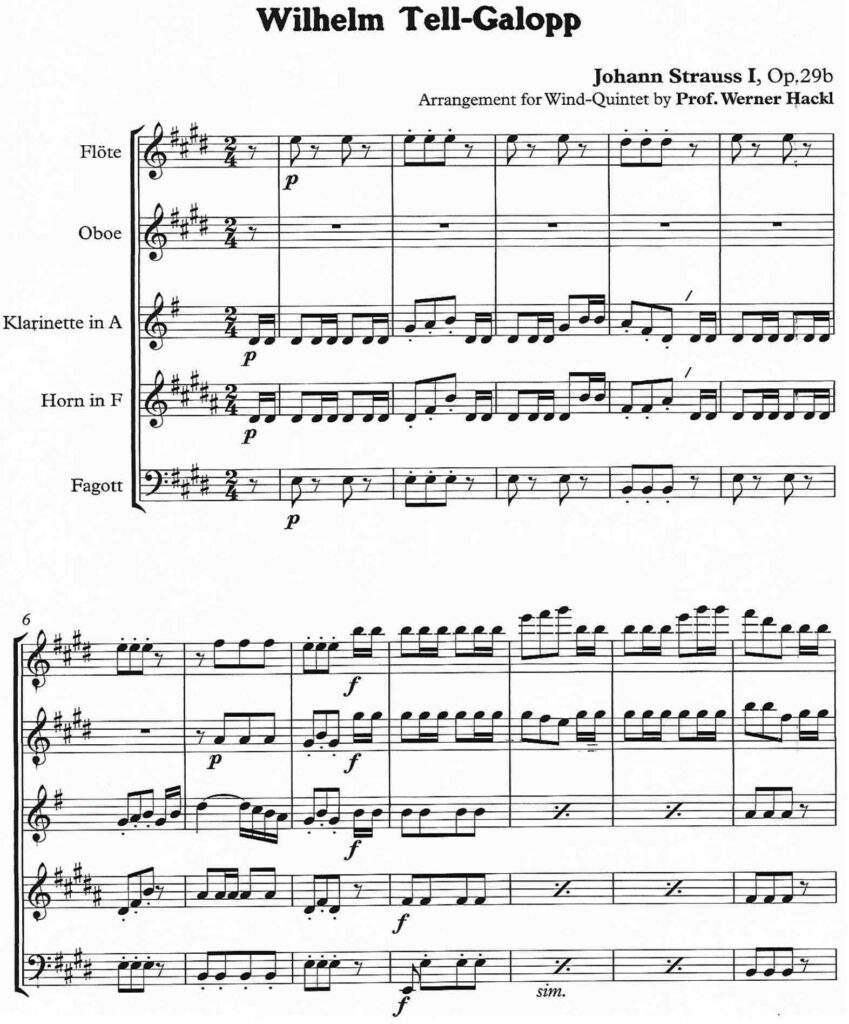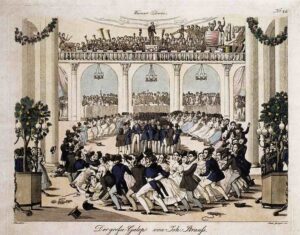Johann Strauss I (1804-1849) Wilhelm Tell-Galopp, op. 29(b) [1829]

Die Durchführung des Galopps bedarf im Vergleich zu vielen anderen klassischen Tänzen keinerlei Übung. Die Paare gehen auf der Tanzfläche in Tanzhaltung und bewegen sich sprunghaft von einer Seite der Tanzfläche zur anderen, wo sie manchmal die Tanzhaltung umkehren und wieder zurück tanzen. Fortlaufender, rascher seitlicher Nachstellschritt mit leichtem, federnden Absprung. Während des Sprunges wird das nachsetzende Bein herangezogen. In einer Variante stellen sich die Paare nebeneinander in eine Reihe und halten über dem Kopf die Hände. Ein hinzukommendes Paar tanzt unter den Händen hindurch und schließt sich am Ende der Reihe an. So wird der Galopp im Wiener Fasching bis heute getanzt.

Compared to many other classical dances, performing the gallop does not require any practice. The couples walk on the dance floor in dance posture and jump from one side of the dance floor to the other, where they sometimes reverse the dance posture and dance back again. Continuous, rapid lateral adjustment step with a slight, springy jump. During the jump, the following leg is pulled towards you. In a variant, the couples stand next to each other in a row and hold their hands above their heads. An additional couple dances under their hands and joins at the end of the row. This is how the gallop is danced at the Viennese Carnival to this day.
| sound sample / Tonbeispiel | score/parts PDF download: € 15,- | add to cart / in den Warenkorb |
